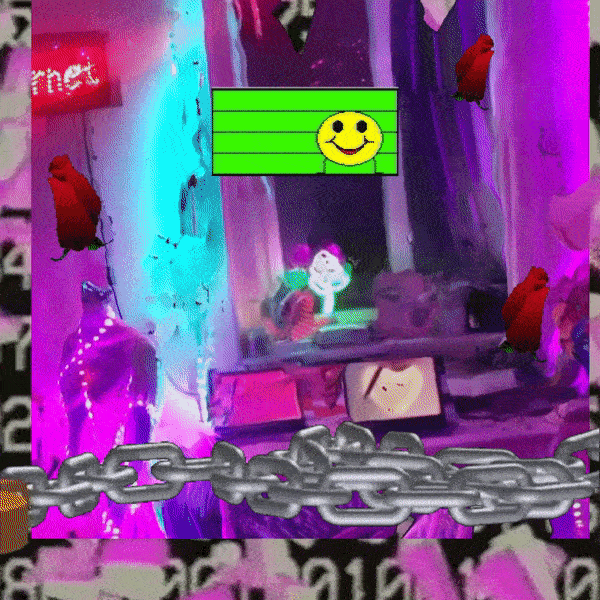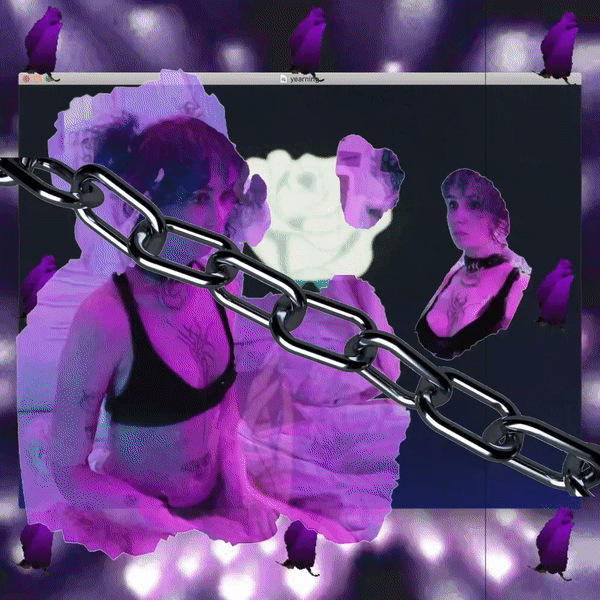Hannah Neckel: A Co-Curated Article on Post-Virtuality
- Anna Mladentseva
- Aug 21, 2020
- 2 min read

Hannah Neckel (@voidgirl79) is a Viennese new media artist working in both digital formats and IRL installations. Hannah’s recent multimedia installation ‘post-virtual garden’ (2019) has a twin, digital identity in the form of an Instagram filter; paving the way for an oscillation between augmented realities and found objects of the material world. Yet, this navigation does not intend to set apart realities or widen the gap between the physical and virtual. It is instead an expression of the post virtual: a synthesised landscape filled with leaky technology that we inhabit today. Even the colour magenta, which frequently appears in Hannah’s work, is thought to be a fictional product that lacks an actual wavelength. In this way, the prominent use of magenta is not only an attempt to reclaim a pre-packaged notion of ‘femininity’, but also a pointer towards a new physical reality of the digital hosted by pixels and hexadecimal values.
In this co-curated article, Hannah and I will reveal the process behind engendering the objects plotted around her post virtual landscapes. We will be surfing through the hierarchy of storage in order to locate the nomadic ‘.obj’ three-dimensional models saved on Hannah’s beloved hard drive, which have been subject to processes of translation. The tree-like structure and display proves to be an interesting interface for post-virtual encounters, somewhat reminiscent of the early days of Internet surfing and linear navigation. Before the centralising efforts of tech giants such as Google, the URL reigned over search engines. The process of sorting, copying and exporting these files is a constant performative reminder of this decentralised dérive. 💨 💨 💨 💨 💨 💨 💨 💨 💨 💨 💨 💨 💨 💨

There are no native environments on the Internet –– all media is subject to continuous protocols and transmission. The objects found in Hannah’s compositions are treated in a similar way. The encoded surface geometry of the .obj files forms the basis for a mobile, binary mesh. A glitch in the Cinema 4D software, commonly used as the conduit between the .obj file and Adobe After Effects, briefly undresses the interface to reveal this encoded habitat. Any perceived environment is a thin veneer –– always at risk of being immobilised.


Quantified habitats started to creep their way into Hannah’s work as recurring actors. In an uncanny translation of one of the post-virtual gardens, familiar numbers can be seen to frantically bleed in the background. A real life installation has been collapsed into an .obj file, causing unexpected surfaces to swell. The tessellated surface that etches polygonal faces into a given .obj file is also reinvented as a chain that twists and infects the uppermost layer. By reversing the process of how three-dimensional models are created, the use of photographic documentation serves as an insight into the interaction between physical and virtual objects. ⛓️⛓️⛓️⛓️⛓️⛓️⛓️⛓️⛓️⛓️⛓️⛓️⛓️⛓️⛓️⛓️⛓️⛓️⛓️⛓️⛓️⛓️⛓️⛓️⛓️⛓️⛓️




concept render for post virtual garden hannah neckel x felix reutzel collab for re:publica 2020









Comments